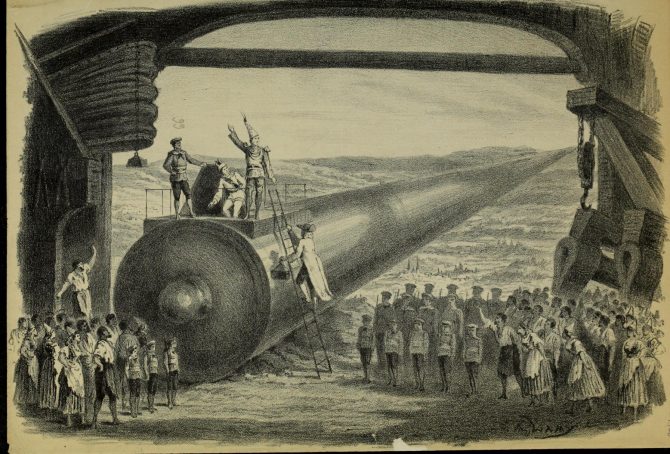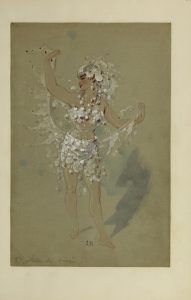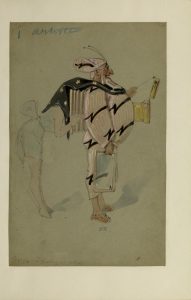This month we celebrate the 50th anniversary of the moon landing. But did you know that nearly 150 years ago there was an earlier moon landing? In 1865, Jules Verne published his novel De la terre à la lune (From the Earth to the Moon) and ten years later it was used as the basis for Jacques Offenbach’s Le voyage dans la lune (The Trip to the Moon). The men who wrote the libretto for this opera took quite a bit of liberty with the story. Even with the change in the title and the differences in the storyline, Jules Verne noticed the similarities between his novel and this opera and complained about it.
The story involves Prince Caprice, a young man who wishes to go to the moon. The kingdom’s greatest scholar, Microscope, devises a way for an artillery shell holding the prince, his father King V’lan, and Microscope to be shot from a cannon and land on the moon. When there, the prince falls in love with the Princess Fantasia, a sélénite (moon person). The princess is unable to return his love, for love does not exist on the moon except as a disease. This all changes when Prince Fantasia tastes the apple that Prince Caprice is eating, and she falls immediately in love with him. Hijinks ensue.
While most of Offenbach’s works are opéras bouffes, a style of French operetta that is typically satirical, Le voyage dans la lune is an opéra féerie. This is a French genre of opera that deals with magic, the fantastic, or the supernatural. They include ballet numbers and stage effects like trap doors and other tricks. Along with the opéras bouffes, they are the predecessors to the modern musical theater and they also influenced early film. This opera is in keeping with the interest in technological advances of the time. Besides the effect of the large cannon on stage, the last act features an exploding volcano. The theater’s façade had on its face an enormous model of the moon. The theater manager prided himself on being an accurate reproduction, craters and all.
The costumes for the production – 673 in all - were designed by Alfred Grévin. A few of them are shown here, and more can be seen in volume 1, part 2 and volume 2, part 1 of La voyage dans la lune seen below. Besides designing costumes for stage performances,Grévin also drew caricatures and made small sculptures.
The opera ran for six months in Paris, opening in October of 1875 and closing in April 1876. It opened in Vienna and London in 1876. A review of a London performance describes the music as “thoroughly Offenbachian – that is to say, that it has melody, brightness, and ‘go,’ and that it is not altogether free from commonplace. Dullness, however, is a word unknown in M. Offenbach’s vocabulary; and hence the present production is as pleasing and animating as any of the works we are wont to associate with his name.”
Watch Le Voyage dans la Lune, opens a new window, Grand Théâtre de Genève (1985)






Add a comment to: The Trip to the Moon (Le Voyage dans la Lune)